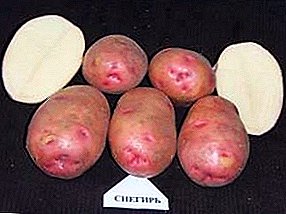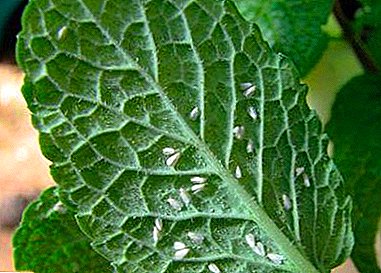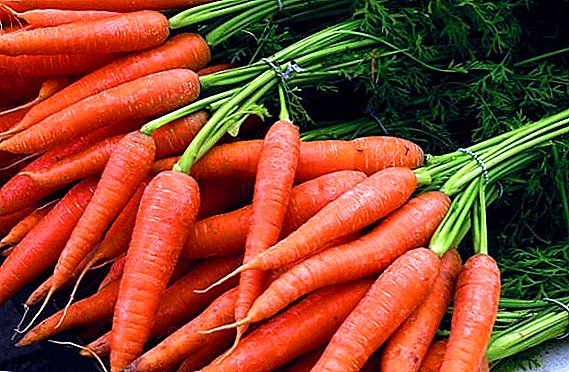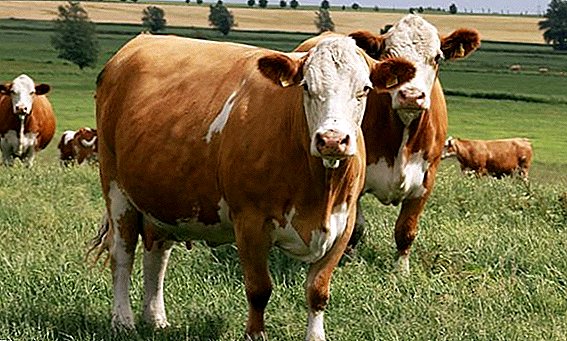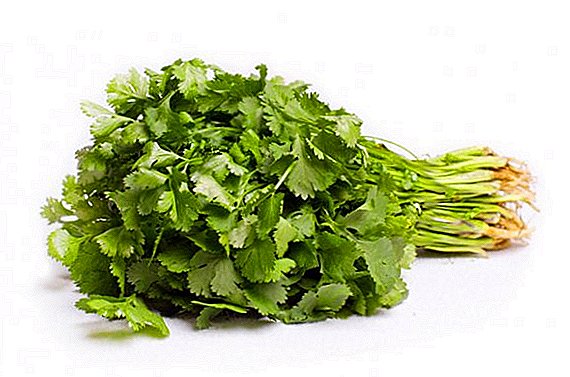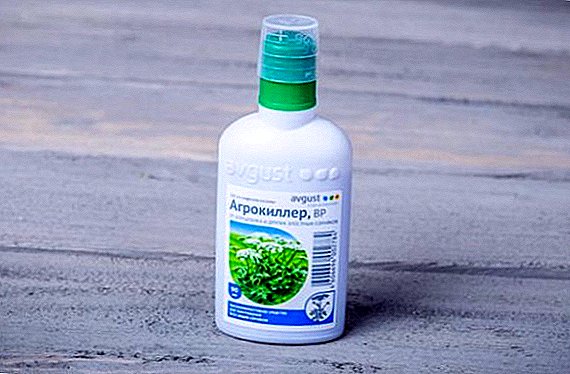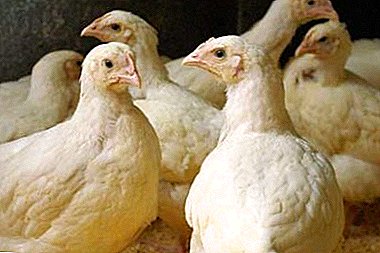
Many professional poultry houses grow broilers on natural feed. Along with mash, grain and animal feed, they give antibiotics and hormonal supplements, yielding to the modern trend. Do they organize the feeding? Will the bird quickly gain weight, or will the young ones die as a result of using “village” feed without additives?
Diseases due to malnutrition
What are broilers sick of? Their main illnesses are non-infectious diseases. The bird suffers from improperly organized care, disturbed feeding patterns and inappropriate housing conditions. The owner himself is to blame for all the troubles, since he ignores the special literature and advice of fellow poultry farmers with experience.
 Having bought a broiler of daily age, a novice breeder does not know how to feed him properly. Out of ignorance, he gives him adult food that causes irreparable harm to the unformed digestive system. Due to the low acidity of gastric secretions, the amount of digestive enzymes is small.
Having bought a broiler of daily age, a novice breeder does not know how to feed him properly. Out of ignorance, he gives him adult food that causes irreparable harm to the unformed digestive system. Due to the low acidity of gastric secretions, the amount of digestive enzymes is small.
If you do not take into account this fact, in the future the chick will die due to improper feeding and developed diseases of the gastrointestinal tract. It is sensitive to the quality of the feed more than an adult individual. If you give him rotten sour food and drink poor quality water, he will die and the breeder will suffer losses.
Often, broilers are diagnosed with hypovitaminosis A, B, D, E, noting the following symptoms:
- convulsions;
- walking in a circle;
- coordination problems;
- diarrhea;
- refusal to eat
Individual features of the breed
Broilers and chickens grow and feed differently. The first is grown mainly for meat, and the second - for eggs. The first grow rapidly, reaching 1.4-1.6 kg to 56 days of age. They are slaughtered before they reach the age of 80 days, since the older they get, the slower they grow and they eat more.
Along with the correct hourly feeding eight times a day, it is important to create optimal conditions for keeping only born broilers. For them prepare a room without pastures and with low light. Light day - up to 17 hours. So that nothing would hinder their growth, they create twilight and lay a litter of dry sawdust on the floor. It is often changed so that the bird does not suffer because of its phlegm. Only then think about the proper feeding of the young.
What should be included in the diet?
Newbred breeders often feed broilers with complex feeds. They have a high calorie content, and besides, they have everything to develop fully:
 corn;
corn;- herbal ingredients;
- minerals;
- vitamins;
- animal supplements.
They are the right choice, as they allow you to form a good immunity, prevent diseases and build muscle mass quickly. This feed was granulated, and the composition was selected by a group of poultry specialists. It does not need to cook: poured into the trough and went on about his business.
Feed rates: table
How much feed and what increase per day to expect breeders?
Specifications | Prestart | Start | Fattening | The finish |
Age | 0-5 days | 6-18 days | 19-37 days | 37-42 days |
Growth | 15 gr. | 33 gr. | 54 gr. | 56 gr. |
Feed rate | 15-21 gr. | 25-89 gr. | 93-128 gr. | 160-169 gr. |
To achieve such numbers, it is important to properly feed the bird. For example, up to ten days you can not give anything except sifted cereals and microgranules; up to 24 days - except for coarse alluvial and granules with a diameter of up to 3.5 mm. Then, before slaughter, you can feed larger granules.
More information about feeding chickens up to a month and after can be found here.
The size of the daily dose: how to pour?
Depending on the age of the daily rate of feed for chickens varies from 15 to 169 grams. By 10 days of age, their weight reaches 200-250 grams, while the males are larger than the chickens, despite the fact that they eat the same amount. By the day of slaughter - 56-80 days they weigh 2.4-2.6 kg with daily feeding with 160-169 grams of suitable food.
Home care
 In home-grown broiler chickens do not feed wet food and boiled eggs, as advised in the forums. Up to 5 days, any food other than millet is undesirable. With the wrong diet they will die. From lack of food, too, and therefore trough set so that each individual had free access to it.
In home-grown broiler chickens do not feed wet food and boiled eggs, as advised in the forums. Up to 5 days, any food other than millet is undesirable. With the wrong diet they will die. From lack of food, too, and therefore trough set so that each individual had free access to it.
On the 8th day, they give everyone a drop of trivitamin, and on the 13th day they begin to teach them to buy ordinary food. How to teach them to him? Give a little dry food, moistening it with whey or meat broth.
If you keep the temperature 30-32 degrees and do not turn off the light around the clock, the chickens will eat and grow 2-3 times faster than their peers, deprived of such privileges. Do not forget about clean water in drinking bowls. 14-day-old individuals are fed in addition to the usual nettle, green onion feed.
Pay attention! Over time, the diet is expanded, introducing lamb, dandelions, cabbage leaves, cottage cheese. Broken out give already monthly broilers.
Daily chicks
Boiled egg and millet are not suitable for feeding daily chickens. Because of this feed, they often develop diarrhea. In order not to face the loss of livestock, they are immediately accustomed to conventional feeds (millet, barley, oats), giving them a little up to 8 times a day. Can be used as a complementary to cottage cheese and wheywithout forgetting to change the water in the drinker with each feeding.
Two weeks
2-week individuals eat up to six times a day, and feed them with boiled fish, bone meal and cake in addition to the usual feed. In order for the bird to grow quickly, they give it potato peelings and fodder yeast. Converse and sour milk are included in the diet, but not water changes.
Daily doses for individuals up to one month
 Monthly individuals are fed four times a day. Gradually prepare them for slaughter, feeding corn (150 gr. / Day).
Monthly individuals are fed four times a day. Gradually prepare them for slaughter, feeding corn (150 gr. / Day).
As part of the combination mix purchased at the store, there should be wheat and crushed barley. When the bird gets stronger, it can eat food waste, peas and potato skins, pre-cooked over low heat.
After 1 month
Monthly chicks weigh from 500 grams or more. The diet is already fully adult, i.e. instead of crushed whole grain. They eat chalk, crushed shells and fodder yeast. To promote rapid weight gain, grass meal, a source of protein, is included in the diet.
Nutritional mix do it yourself
For an adult it is not necessary to buy food in the store. You can cook it yourself on the following recipe:
- 3 gr. feed fat;
- one gram of chalk and grass;
- 5 gr. fodder yeast;
- 8 Gr. barley;
- 13 grams of wheat;
- 17 grams of fish / meat and bone meal and meal / cake;
- 45 gr. corn.
How to reduce the consumption of feed for meat breeds?
Ready-made feeds are the best choice for owners who move on to the next stage of broiler production, i.e. to fattening. They are not affordable for everyone. Many breeders of this bird are forced to save, and therefore they prefer food waste, grain mixtures, grain, juicy and green feed. Do they do the right thing? Partially yes. Ideally, the broiler diet to reduce costs should look like this:
- Wet mash made on the basis of chopped greens, grains, potato skins, etc. Concentrates also provide a weekly weight gain.
- Wet mash prepared from boiled or crushed potatoes with the addition of grain, roots, greens and fodder yeast. The mixture is prepared six hours before feeding.
- Dairy products, which contain calcium and animal proteins, also significantly reduce the cost of feeding broilers.
- Greens, which are suspended above the trough so that the bird does not tread on the product rich in natural vitamins.
Conclusion
In order to grow broilers and not to face the death of more than half of the livestock, it is important not only to create optimal conditions for maintenance (maintaining cleanliness and order, regular disinfection of feeders, drinkers, replacement of bedding, etc.), but also properly feed them. Not a panacea for the use of modern feed: if you wish, you can feed them food waste with greens.


 corn;
corn;